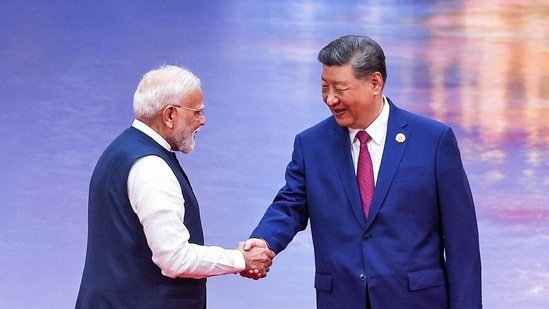China’s loss is Mexico’s gain.
Between 2018 and 2024, the value of China’s exports to the United States declined by 18.5%, falling from US $538.5 billion in the former year to $438.95 billion in the latter year. China’s share of the U.S. market for imports declined significantly as a result.
According to Mexico’s Finance Ministry (SHCP), Mexico captured 24% of the U.S. market for imports that China lost in the 2018-2024 period.
The figure is included in the SHCP’s 2026 budget proposal, a 93-page document that was submitted to Congress earlier this month.
U.S. protectionism against Chinese goods helped Mexico to increase its share of the United States’ market for imports in recent years, allowing it to overtake the East Asian economic powerhouse as the top exporter to the world’s largest economy in 2023 and maintain the enviable position ever since.
Mexico’s share of the U.S. market for imports increased two percentage points between 2018 and 2024 to reach 15.5% while China’s share declined 7.8 percentage points to 13.4%.
Chinese automaker Great Wall Motors ‘is here to stay’ in Mexico, despite proposed tariff hike
The SHCP believes that Mexico now has an even greater opportunity to capture a bigger share of the U.S. market for imports, given that the Trump administration has recently increased tariffs on imports from China, a country known colloquially as “the world’s factory.”
Mexico’s trade advantage widens
According to the SHCP, the United States’ “effective tariff rate” on imports from China between 2018 and 2024 was 6.6 percentage points higher than its effective tariff rate on imports from Mexico, which, along with the U.S. and Canada, is party to the USMCA free trade pact.
The difference in the effective tariff rates “allowed Mexico to gain around 24% of the participation” in the U.S. market for imports that China lost, the ministry said.
The SHCP said that Mexico now has a “comparative advantage” of 35.6 percentage points over China in terms of the effective tariff rates applicable to the two countries’ exports to the United States.
“The current magnitude [of the difference] opens up an even greater opportunity to expand [Mexico’s] exports, production and employment in the manufacturing sector,” the ministry said.
Mexico vs. China, and the world
“Despite a more uncertain international environment due to changes in trade policy,” Mexico “maintains one of the most favorable positions in global trade and, in particular, with its main North American partners.”
So reads an inset in the SHCP’s 2026 budget proposal, including in the document under the title “Resilience of Mexico’s external sector in the face of a new trade environment.”

The Finance Ministry said that Mexico’s advantage is “explained by four factors”:
- A lower tariff rate to access the U.S. market compared to competitors.
- “Preferential access” to the U.S. market thanks to the USMCA. (Most Mexican goods that comply with the USMCA can enter the U.S. tariff-free).
- The “deep integration” of Mexico’s exports in “regional value chains.” (Mexico and the U.S. are said to be part of a “co-production system”).
- The “flexibility of the exchange rate regime, which allows orderly adjustments and preserves competitiveness.”
The SHCP said that the United States’ effective tariff rate for imports from Mexico was 4.7% in July. It described the rate as “one of the lowest” among the United States’ trade partners.
The ministry said that the United States’ “global average” tariff rate was 9.7%. For the European Union, it was a slightly lower 9.1%, while for China it was a much higher 40.4%, the SHCP said.
It highlighted that 81% of Mexico’s exports to the United States didn’t face tariffs in July, mainly thanks to the UMSCA, which superseded NAFTA in 2020 and is scheduled for review in 2026.
The SHCP also noted that the United States’ effective tariff rate on imports from Mexico has “only increased” 4.5 percentage points in 2025 compared to last year, whereas the U.S. hiked duties on Chinese goods by 29.5 percentage points, and 7.4 percentage points, on average, on products from countries around the world.
Mexico’s trade advantage over other countries “doesn’t depend on circumstances” that are subject to change (oftentimes due to the apparent whims of the U.S. president), but depends rather on an “institutional framework” — the USMCA — “that limits exposure to tariff increases,” the ministry said.
Mexico’s worsened yet still favorable trade situation with the U.S. — which Mexican officials, including President Claudia Shienbaum and Economy Minister Marcelo Ebrard, have emphasized on innumerable occasions — should help the country to continue to attract foreign investment in the years ahead. Indeed, foreign direct investment in Mexico hit a record high in the first half of the year.
SHCP highlights importance of USMCA review
The Finance Ministry said that the 2026 USMCA review “will be decisive to consolidate a more predictable framework for regional trade and to give greater certainty to companies, even in the event of adjustment to rules of access and origin.”
“Clarity in these criteria will be key to strengthening investment plans and expanding production chains with greater national content,” the SHCP said.
The Mexican government is determined to achieve even more favorable conditions for Mexico-based companies that export to the United States. As things stand, U.S. tariffs apply to a range of Mexican products, including vehicles, aluminum, steel and goods that don’t meet USMCA rules.
The government’s plan to impose higher tariffs on a broad range of goods from China and other countries with which Mexico doesn’t have trade agreements is widely seen as an attempt to appease the U.S. ahead of the USMCA review, while also protecting Mexican industry and spurring increased domestic production — key objectives of the Plan México economic initiative.
Sheinbaum is confident that the USMCA will endure beyond the 2026 review, and frequently asserts that the way in which North America can be most competitive globally is as a united trade bloc and production hub.
Trump — who has both questioned whether the USMCA is still needed and indicated that he wants to “renegotiate” the agreement rather than just review it — is the X factor in the upcoming review, a president who has reshaped global trade in 2025, and shown he is prepared to violate the existing North American trade framework to exert pressure on both Mexico and Canada.
By Mexico News Daily chief staff writer Peter Davies ([email protected])





